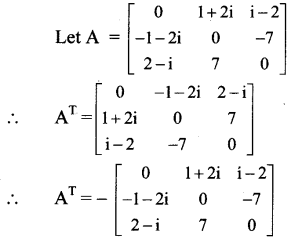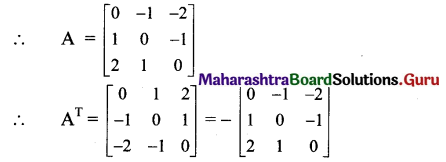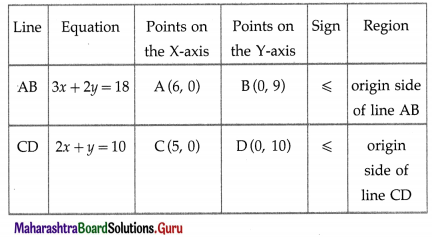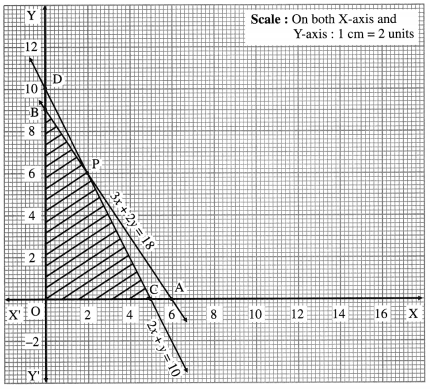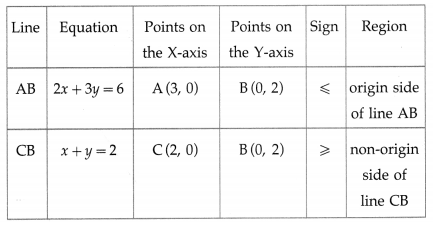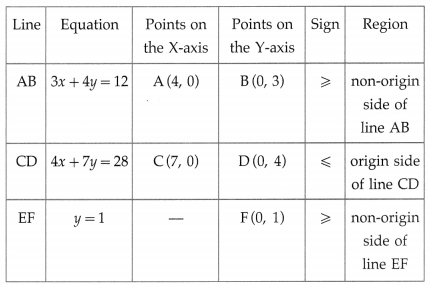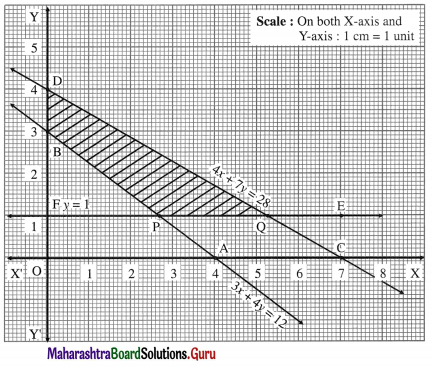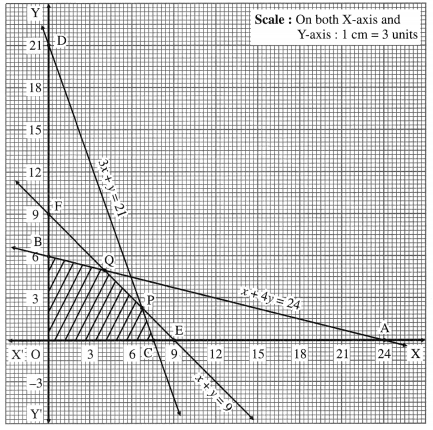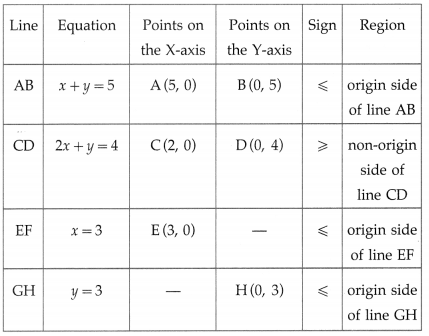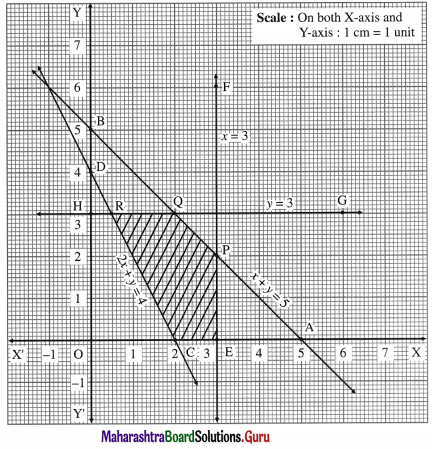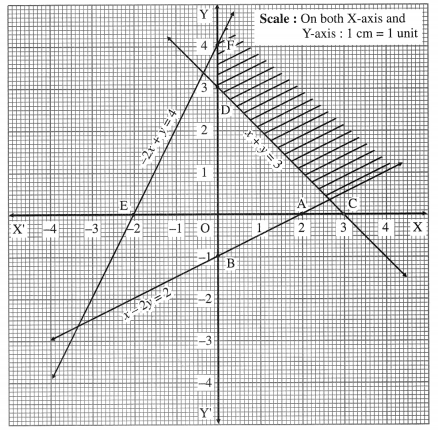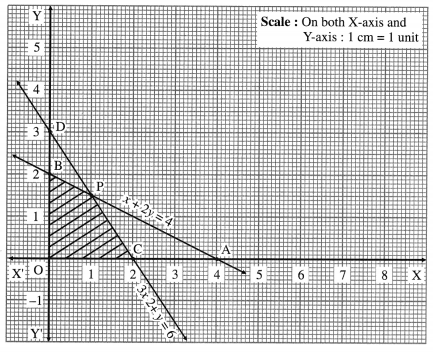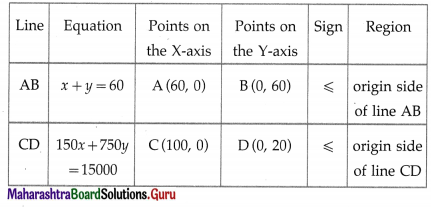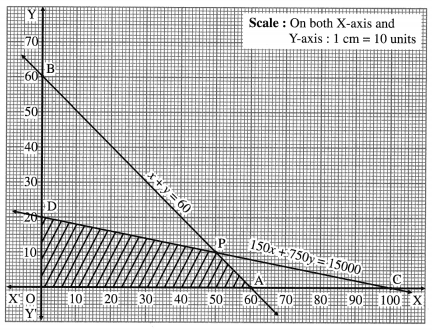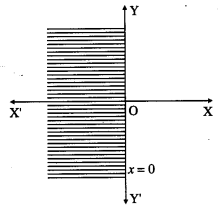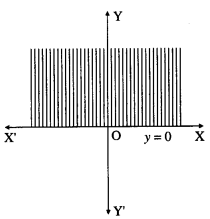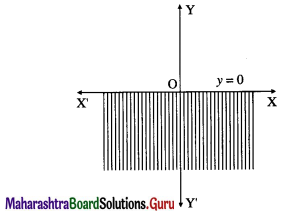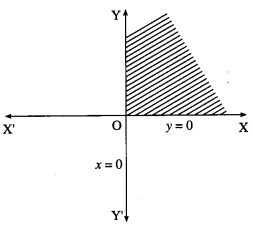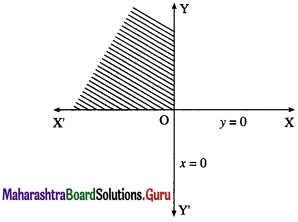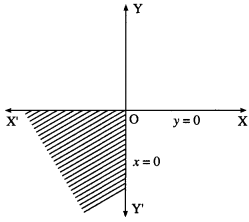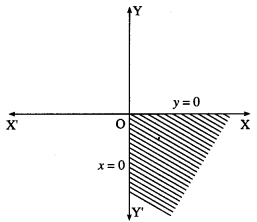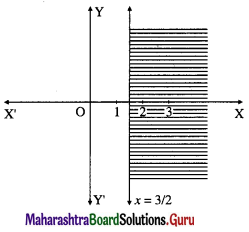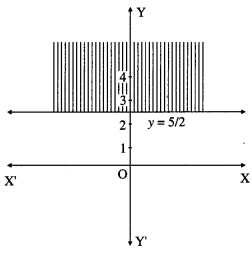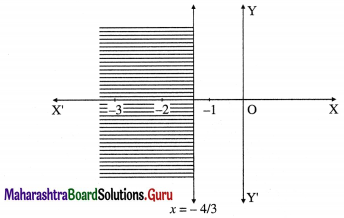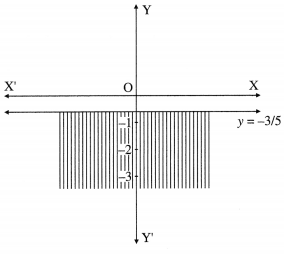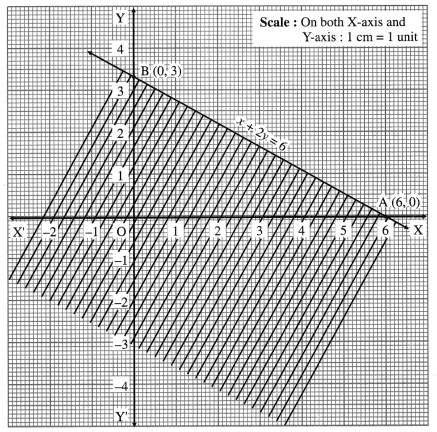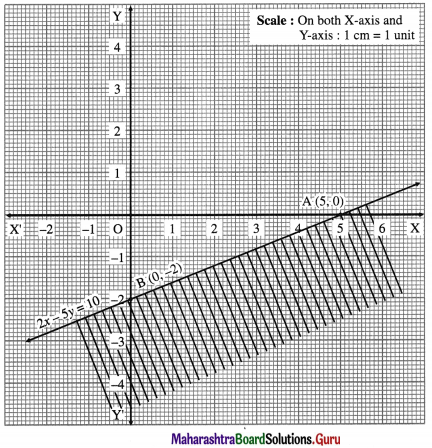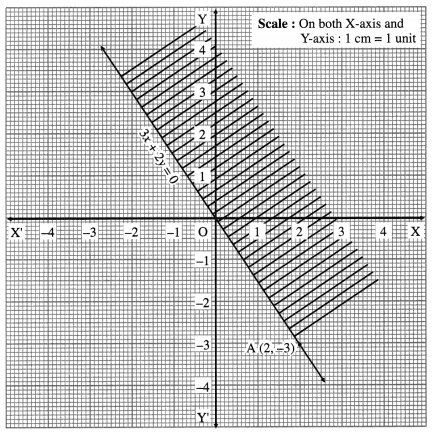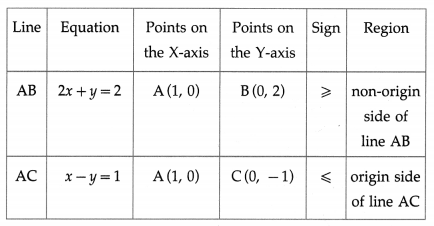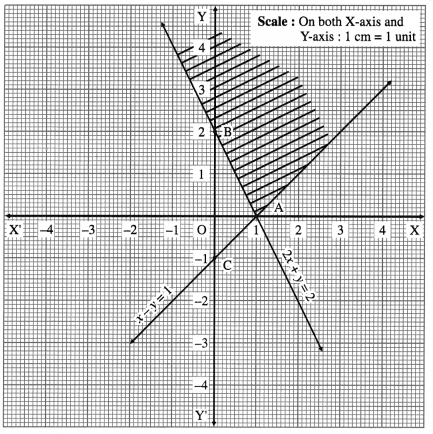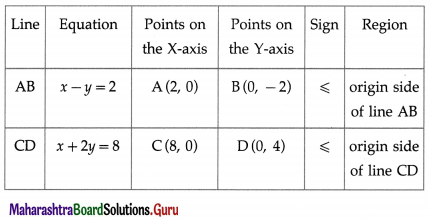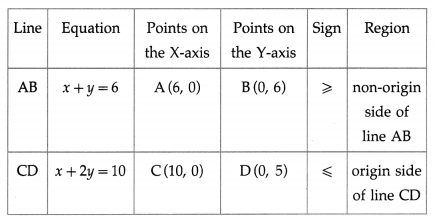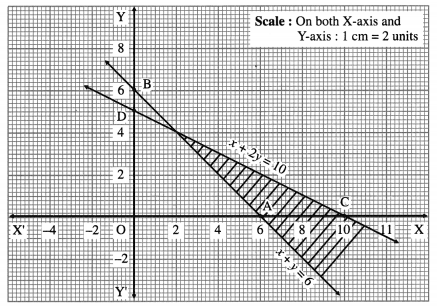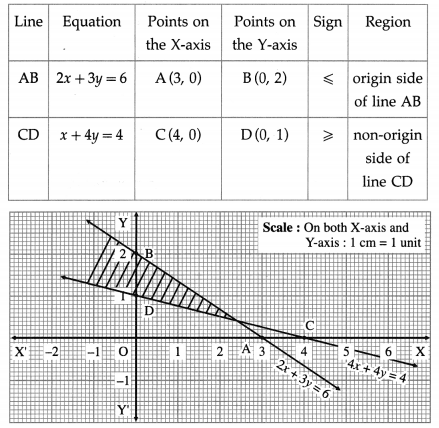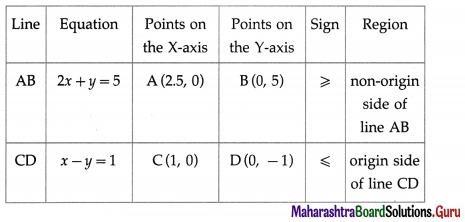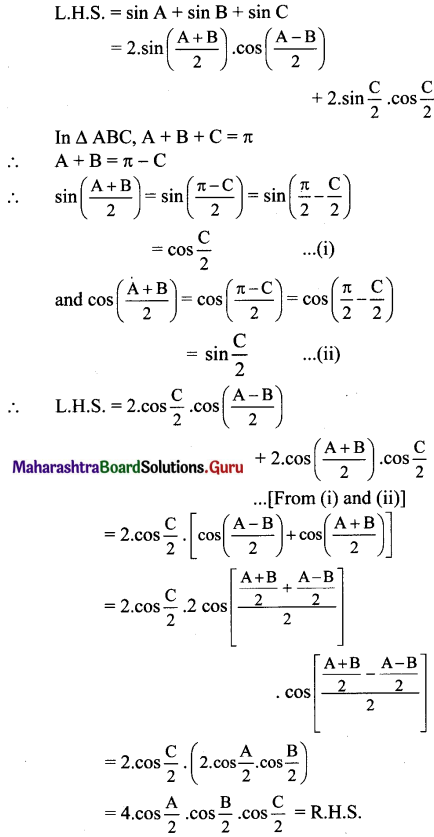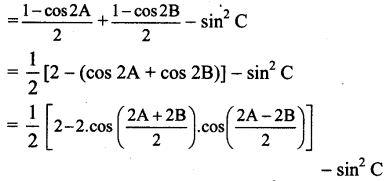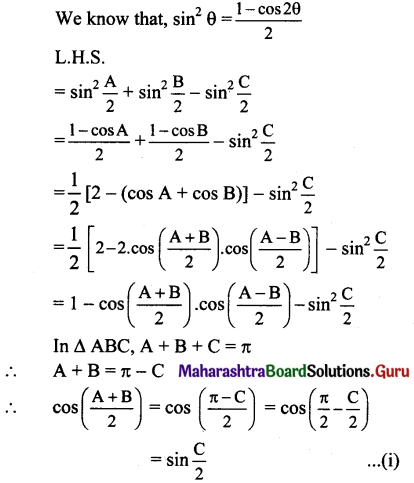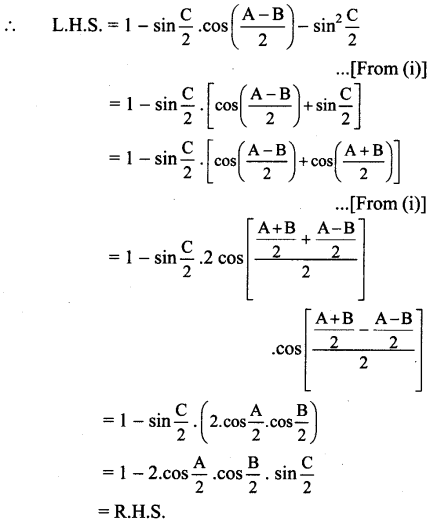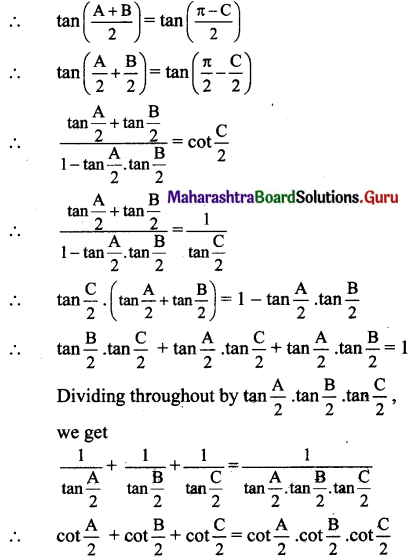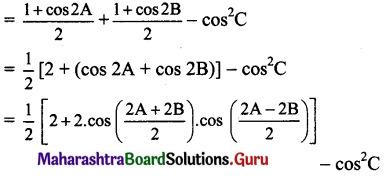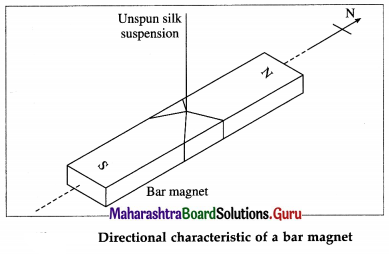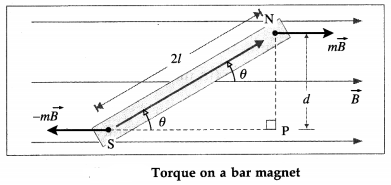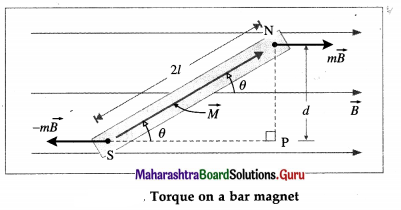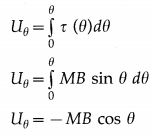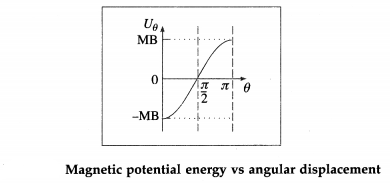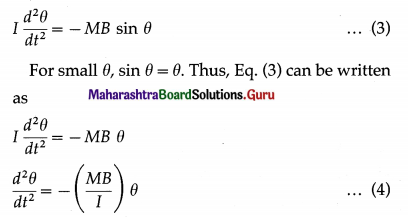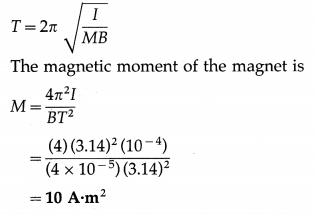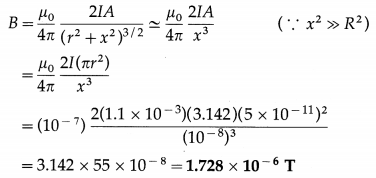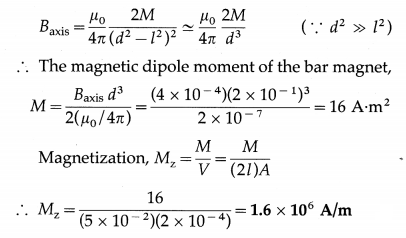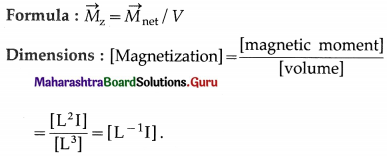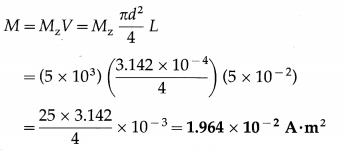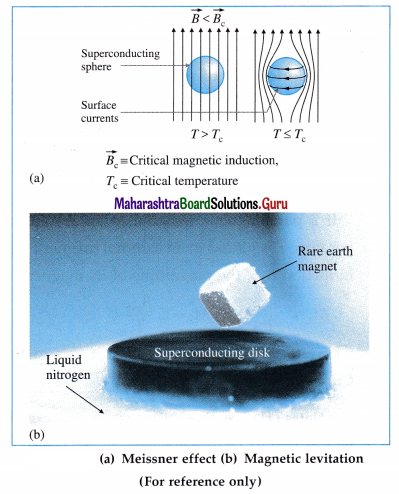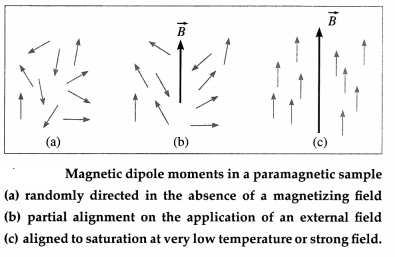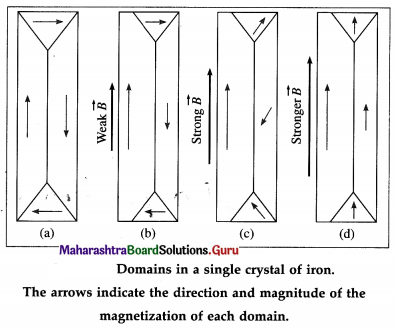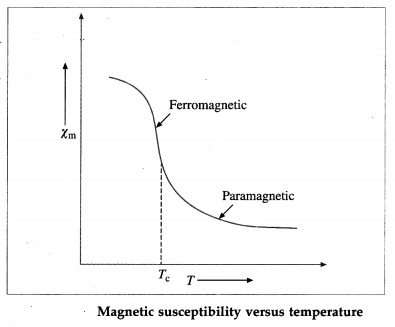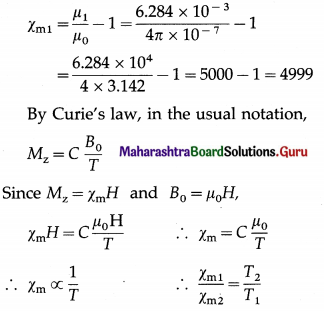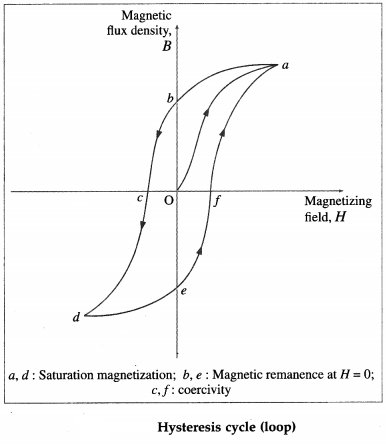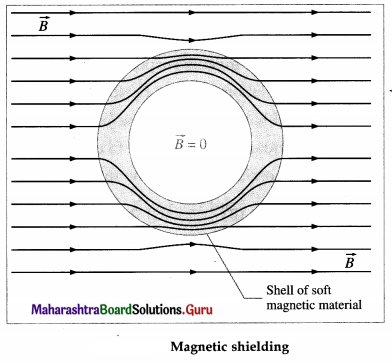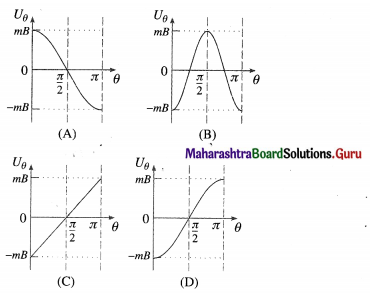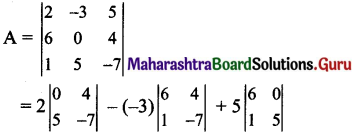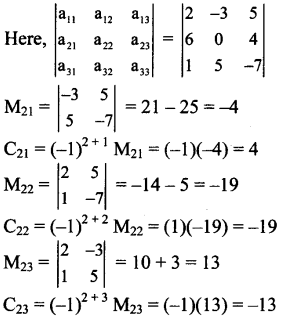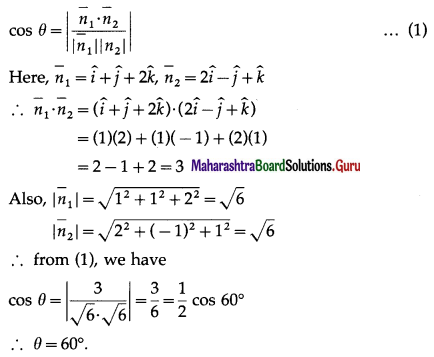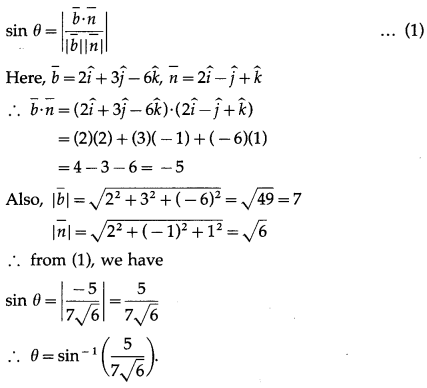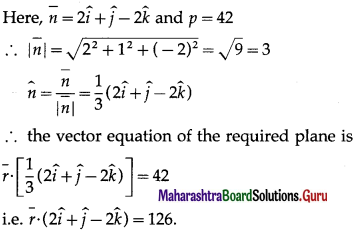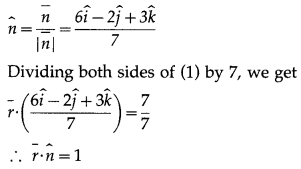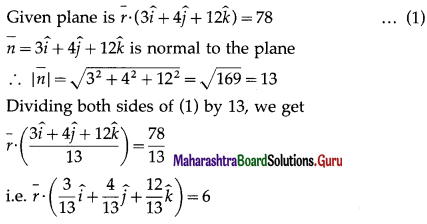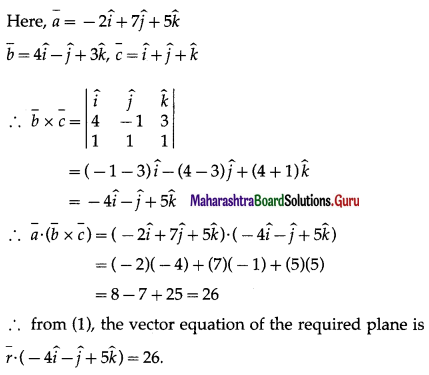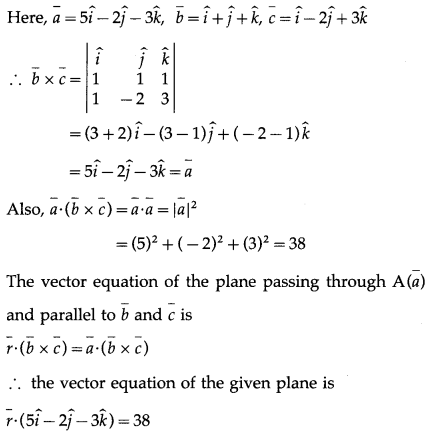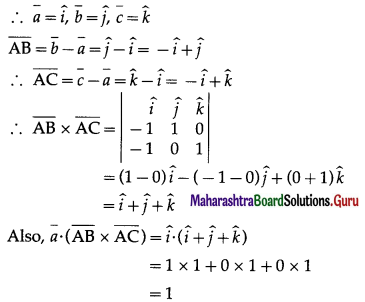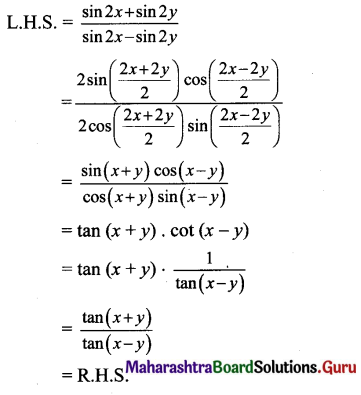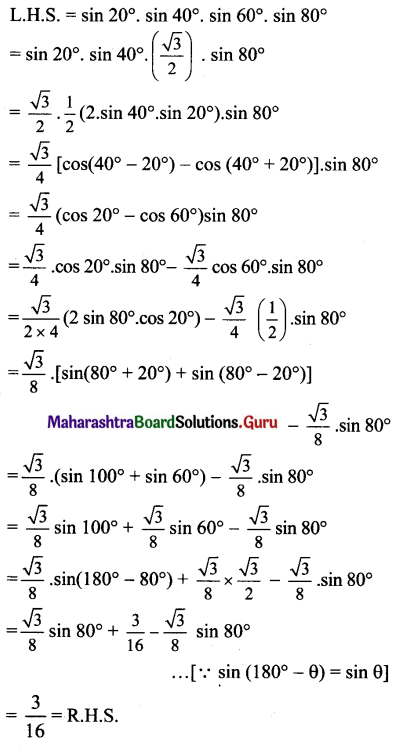Balbharti Maharashtra State Board 12th OCM Important Questions Chapter 4 Business Services Important Questions and Answers.
Maharashtra State Board 12th Commerce OCM Important Questions Chapter 4 Business Services
Select the correct option and rewrite the sentences
Question 1.
Principle of utmost good faith is applicable to ………………
(a) Life insurance
(b) Marine insurance
(c) All types of insurance
Answer:
All types of insurance
Question 2.
Insurable interest must exist in ……………..
(a) Life insurance contract only
(b) Marine insurance contract only
(c) Every insurance contract
Answer:
Every insurance contract

Question 3.
Indemnity means ………………….
(a) compensation equal to loss
(b) compensation more than loss
(c) compensation less than loss
Answer:
compensation equal to loss.
Question 4.
In India railways are owned and managed by ………………….
(a) Private companies
(b) Government
(c) Individuals
Answer:
Government
Question 5.
The costliest means of transport is ………………
(a) Rail transport
(b) Water transport
(c) Air transport
Answer:
Airtransport
Question 6.
Road transport is suitable for ……………… distance.
(a) Short
(b) Long
(c) Medium
Answer:
Short
Question 7.
Railway transport is convenient mode of transport for travelling ………………. distance.
(a) Short
(b) Long
(c) Medium
Answer:
Long.
Question 8.
Food Corporation of India is Em exEimple of ……………….
(a) Government warehouse
(b) Duty-paid warehouse
(c) Cold storage warehouse
Answer:
Government warehouse
Question 9.
Duty paid warehouses are located near ………………….
(a) Railway stations
(b) villages
(c) port and dock
Answer:
port and dock.
Question 10.
Postal services are administered by …………………
(a) Private companies
(b) Government of India
(c) Panchayat system
Answer:
Government of India
Question 11.
In case of urgency and to avoid delays ……………… is sent.
(a) Registered post
(b) Speed post
(c) Insured post
Answer:
Speed post
Question 12.
Inland letter card is used for transmission of messages ……………… only.
(a) outside India
(b) within India
(c) within state
Answer:
within India
Question 13.
Communication in the nature of financial statements may be posted by a service provider to the customers at least once in ……………….. days under Bill Mail Service.
(a) 90
(b) 60
(c) 30
Answer:
90
Question 14.
A ………….. is the person named in money order to whom the money is to be paid.
(a) drawee
(b) drawer
(c) payee
Answer:
payee
Question 15.
Under iMO one can transfer money from Rs ………………….. to Rs 50,000 from designated iMO post offices.
(a) 5,000
(b) 1,000
(c) 500
Answer:
1,000.
Question 16.
The types of account under which the amount is kept fixed for specific period is called ……………….
(a) Fixed Deposit Account
(b) Current Account
(c) Recurring Deposit Account
Answer:
Fixed Deposit Account
Question 17.
The account In which a monthly deposit of certain amount Is to be made for a fixed period Is known as ……………….
(a) Savings Account
(b) Current Account
(c) Recurring Deposit Account
Answer:
Recurring Deposit Account
Question 18.
The account suitable for business purpose is ………………….
(a) Savings Account
(b) Current Account
(c) Recurring Account
Answer:
Current Account

Question 19.
The account suitable for creating a saving habit is ………………..
(a) Current Account
(b) Recurring Account
(c) Savings Account
Answer:
Savings Account
Question 20.
There Is no limit on the frequency of withdrawals from a …………………
(a) Savings Account
(b) Fixed Deposit Account
(c) Current Account
Answer:
Current Account.
Match the pairs
Question 1.
| Group A | Group B |
| (A) Life Insurance | (1) Written request by insured |
| (B) Mitigation of loss | (2) Document contains terms and conditions of insurance contract |
| (C) Premium | (3) Insurable interest |
| (D) Policy | (4) Maximise loss |
| (E) Claim | (5) Transfer of loss from one person to another |
| (F) Subject-matter of insurance | (6) To minimise the loss |
| (7) Owned by Private Companies |
| (8) Life, property or cargo of insured |
| (9) Demand to compensate the loss occurred |
| (10) Payment made by policyholder |
Answer:
| Group A | Group B |
| (A) Life Insurance | (3) Insurable interest |
| (B) Mitigation of loss | (6) To minimise the loss |
| (C) Premium | (10) Payment made by policyholder |
| (D) Policy | (2) Document contains terms and conditions of insurance contract |
| (E) Claim | (9) Demand to compensate the loss occurred |
| (F) Subject-matter of insurance | (8) Life, property or cargo of insured |
Question 2.
| Group A | Group B |
| (A) Air Transport | (1) Suitable for carrying bulky and heavy goods |
| (B) Pipeline Transport | (2) Connects two places on the hills |
| (C) Railway Transport | (3) Raigad Ropeway |
| (D) Road transport | (4) Fastest mode of Transport |
| (E) Water Transport | (5) Feeder to other Transport |
| (6) Petroleum and gas |
| (7) Monorail transport |
| (8) Door to door service |
| (9) Owned by private companies |
| (10) Fully owned by foreign companies. |
Answer:
| Group A | Group B |
| (A) Air Transport | (4) Fastest mode of Transport |
| (B) PipelineTransport | (6) Petroleum and gas |
| (C) Railway Transport | (5) Feeder to other Transport |
| (D) Road transport | (8) Door to door service |
| (E) Claim | (1) Suitable for carrying bulky and heavy goods |
Question 3.
| Group A | Group B |
| (A) Warehousing | (1) Located at railway station |
| (B) Cold storage | (2) Stocks the goods on which duty is paid |
| (C) Warehouse keeper | (3) Owned and managed by Government |
| (D) Duty paid warehouses | (4) Time utility |
| (E) Government warehouses | (5) Bond |
| (6) Possession utility |
| (7) Perishable goods |
| (8) Stocks the goods on which duty is not yet paid |
| (9) Owned and managed by NGOs |
| (10) Operated by manufacturers to profit storage needs |
Answer:
| Group A | Group B |
| (A) Warehousing | (4) Time utility |
| (B) Cold storage | (7) Perishable goods |
| (C) Warehouse keeper | (5) Bond |
| (D) Duty paid warehouses | (2) Stocks the goods on which duty is paid |
| (E) Government warehouses | (3) Owned and managed by Government |

Question 4.
| Group A | Group B |
| (A) Reserve Bank of India (RBI) | (1) Recurring deposit account |
| (B) Overdraft facilities | (2) 12 hours service |
| (C) ATM | (3) Withdrawals after fixed period of time |
| (D) Fixed deposit account | (4) Central Bank |
| (E) Business Service | (5) Current account |
| (6) 24 hours service |
| (7) Commercial bank |
| (8) Withdrawal before fixed period of time |
| (9) Intangible in nature |
| (10) Tangible in nature |
Answer:
| Group A | Group B |
| (A) Reserve Bank of India (RBI) | (4) Central Bank |
| (B) Overdraft facilities | (5) Current account |
| (C) ATM | (6) 24 hours service |
| (D) Fixed deposit account | (3) Withdrawals after fixed period of time |
| (E) Business Service | (9) Intangible in nature |
Give one word/phrase/term for the following sentences
Question 1.
The policy under which cargo is insured for a specific period and voyage.
Answer:
Mixed Policy
Question 2.
The principle of insurance under which the insurer and insured must show complete faith towards each other.
Answer:
Principle of utmost good faith
Question 3.
The type of insurance where the principle of indemnity is not applicable.
Answer:
Life insurance
Question 4.
The person who is protected against certain losses.
Answer:
Insured or Policy Holder
Question 5.
The policy for which the premium is lowest, among all insurance policies.
Answer:
Term insurance policy
Question 6.
The consideration for which the insurer agrees to insure the insured.
Answer:
Premium
Question 7.
This policy is applicable till the departure of the vessel from the port.
Answer:
Part Risk Policy
Question 8.
A policy in which subject matter is insured for a specific voyage irrespective of time involved in it.
Answer:
Voyage policy
Question 9.
Type of marine insurance policy purchased from more than one insurer.
Answer:
Composite marine insurance policy
Question 10.
Policy under which several ships belonging to one owner are insured under the same policy.
Answer:
Fleet Policy or Block Policy.
Question 11.
Mode of transport which helps to get goods and passengers at their doors.
Answer:
Road transport
Question 12.
The mode of transport which connects two places on the hills or across a valley or river.
Answer:
Rope way.
Question 13.
A warehouse where the goods can be stored after the payment of import duty.
Answer:
Duty Paid Warehouse
Question 14.
These warehouses are owned and operated by big manufacturers to fulfil their own storage needs.
Answer:
Private Warehouses
Question 15.
The warehouses which provide storage facilities to general public for certain charges.
Answer:
Public Warehouses
Question 16.
The warehouses which store imported goods until the payment of custom duty.
Answer:
Bonded Warehouses
Question 17.
These warehouses are owned, managed and controlled by co-operative societies.
Answer:
Cooperative Warehouses.

Question 18.
A quick and easy way of transferring personal remittances from abroad to beneficiaries in India.
Answer:
International Money Transfer
Question 19.
A method of exchanging mail between people using electronic devices.
Answer:
e-mail
Question 20.
The process of passing any information from one person to another with the help of some medium.
Answer:
Communication
Question 21.
The postal service which provide complete solutions right from mail preparation to mail delivery useful for small business and large companies.
Answer:
Business Post.
Question 22.
A bank which Is known as banker’s bank.
Answer:
Central bank
Question 23.
The type of bank which issues currency notes In India.
Answer:
Reserve Bank of India
Question 24.
They operate at village level.
Answer:
Primary Credit Societies
Question 25.
It is not allowed to Issue loans and credit cards.
Answer:
Payment Bank
Question 26.
It is an apex institution for financing agricultural and rural sector.
Answer:
National Bank for Agricultural and Rural Development (NABARD)
Question 27.
The type of bank engaged in financing import and export trade and in foreign exchange transactions.
Answer:
Exchange bank.
State whether following statements are True or False
Question 1.
The principle of subrogation is applicable to life insurance contract.
Answer:
False
Question 2.
The principle of utmost good faith is only applicable to life insurance contract.
Answer:
False
Question 3.
Insured must have insurable interest in the subject-matter at the time of taking the policy.
Answer:
True
Question 4.
An individual must always try to minimize the loss by fire as far as possible.
Answer:
True

Question 5.
The Principle of indemnity is applicable to fire insurance.
Answer:
True
Question 6.
Railway transport provides door to door services.
Answer:
False
Question 7.
Water transport is the costliest means of transport.
Answer:
False
Question 8.
Transport is useful in raising standard of living.
Answer:
True
Question 9.
Air transport is suitable for short distances.
Answer:
False
Question 10.
Air transport plays vital role during war or emergency situation.
Answer:
True.
Question 11.
International trade for perishable goods has become possible due to cold storage warehouses.
Answer:
True
Question 12.
In bonded warehouses imported goods on which customs duty is already paid are stocked.
Answer:
False
Question 13.
In duty paid warehouses imported goods on which customs duty is not yet paid are stocked.
Answer:
False
Question 14.
Co-operative warehouses are owned, managed and controlled by individuals and private enterprises to earn rent.
Answer:
False
Question 15.
Warehouses can provide transportation facilities to bulk depositors.
Answer:
True.
Question 16.
Parcel cannot be insured.
Answer:
False
Question 17.
Envelope ensures safety of documents and confidentiality of messages.
Answer:
True

Question 18.
If insured parcel lost in transit, the post office is not responsible to pay the insured amount.
Answer:
False
Question 19.
As a premium, courier service is usually less” expensive than usual mail services.
Answer:
False.
Question 20.
Central bank of the nation cannot accept deposits from the public.
Answer:
True
Question 21.
Overdraft facility Is given to savings account holders.
Answer:
False
Question 22.
Current account Is suitable for business community.
Answer:
True
Question 23.
Debit cards are issued by the bank to non account holders also.
Answer:
False
Question 24.
Real-Time Gross Settlement means payment transaction is not subject to any waiting period.
Answer:
True
Question 25.
The minimum amount to be remitted through RTGS Rs 1.00,000
Answer:
False
Question 26.
Banks never charge any commission for issuing a bank draft.
Answer:
False
Question 27.
Bank issue gift cheques and gold coins to account holders only.
Answer:
False
Find the odd one
Question 1.
Voyage policy, Time policy, Average policy, Mixed policy.
Answer:
Average policy
Question 2.
Specific policy, Composite policy, Comprehensive policy, Excess policy.
Answer:
Composite policy.
Question 3.
Big ships, boats, helicopters, launches
Answer:
helicopters
Question 4.
Aircrafts, tankers, jets, helicopters
Answer:
tankers

Question 5.
Animal carts, motor-cycles, tracks, boats
Answer:
boats
Question 6.
Launches, buses, boats, tankers
Answer:
buses
Question 7.
Fruits, machinery, fish, vegetables
Answer:
machinery
Question 8.
Machinery, cotton, coal, vegetables
Answer:
vegetables.
Question 9.
Storage, advertising, price stabilisation, risk-bearing
Answer:
advertising
Question 10.
Financing, grading and packing, salesmanship, processing.
Answer:
salesmanship.
Question 11.
Inland Letter, Envelope, Business Post, Book Post.
Answer:
Business Post
Question 12.
Electronic Money Transfer, Instant Money order, Bill Mail Service, International Money Transfer.
Answer:
Bill Mail Service
Question 13.
e-post, courier service, internet, email.
Answer:
e-post.
Question 14.
Issue of cheques. locker facility. issue of currency flotes, preparing project report.
Answer:
issue of currency notes
Question 15.
Portfolio management. framing monetary policy, Dematerlalisatlon, Forex transactions.
Answer:
framing monetary policy
Complete the sentences
Question 1.
……………… policy is suitable for small ship owner having only one ship.
Answer:
Single vessel
Question 2.
……………… policy is purchased from more than one insurer.
Answer:
Composite
Question 3.
Insurance is a means of protection from …………………
Answer:
financial loss
Question 4.
………………. is the consideration for which the insurer agrees to insured a person.
Answer:
Premium
Question 5.
……………….. policy is like pension payment scheme.
Answer:
Annuity
Question 6.
ULIP stands for ………………..
Answer:
Unit Linked Insurance Plan.
Question 7.
Road transport is suitable for …………….. distance.
Answer:
short
Question 8.
Road transport is suitable to carry …………….. goods over a short distance.
Answer:
Perishable
Question 9.
Transport system contributes to the rapid development of ………………..
Answer:
industry and commerce
Question 10.
Long distance networks of Pipeline transport are used for ………………
Answer:
petroleum and gas
Question 11.
When the goods and passenger move inside the country, it is known as ……………….. water transport.
Answer:
inland.
Question 12.
Warehouses provide space for ………………
Answer:
storage of goods
Question 13.
Bonded warehouses are under the close supervision of ………………
Answer:
customs authority
Question 14.
The ……………… warehouses are owned and managed by big manufacturers and merchants.
Answer:
private

Question 15.
All duty paid warehouses are ………………
Answer:
public warehouses
Question 16.
……………… warehouses are owned, managed and controlled by the Government.
Answer:
Government
Question 17.
……………… warehouses are owned, managed and controlled by co-operative societies.
Answer:
Co-operative.
Question 18.
The process of passing information from one person to another with the help of some ……………….. is called Communication.
Answer:
Medium
Question 19.
The Department of Post and Telegraph is part of ………………..
Answer:
Ministry of Communication and Information and Technology
Question 20.
Printed books, magazines, etc. can be sent through ………………
Answer:
Book Post
Question 21.
………………. is the service through which customers can send their messages to any address in India.
Answer:
e-post
Question 22.
Courier services are usually employed by ………………..
Answer:
a company
Question 23.
The minimum quantity of articles to be posted ……………….. by Bill Mail Service at a time is
Answer:
5000.
Question 24.
Cash credit is granted under a separate …………………
Answer:
Loan account
Question 25.
ICICI Bank is an example of ……………..
Answer:
PrIvate Sector Bank
Question 26.
The account under which a fixed sum is to be deposited regularly every month is known as ………………
Answer:
Recurring deposit account
Question 27.
The RBI was established in the ……………… year
Answer:
1945
Question 28.
In public sector banks, the majority of capital Is held by …………………
Answer:
Government.
Select the correct option and complete the following table
Question 1.
(Warehousing provides storage facilities on rental basis, Big manufacturers and merchants to fulfil their storage needs, Duty paid warehouses, Bonded warehouses)
| Group A | Group B |
| (1) Private warehouses | ————— |
| (2) ————– | Work under the control of customs authorities |
| (3) ————– | Useful for importer as proper care of goods is taken after paying customs duty |
| (4) Public warehouses | ————– |
| (5) Time utility and place utility | ——————– |
Answer:
| Group A | Group B |
| (1) Private warehouses | Big manufacturers and merchants to fulfil their storage needs |
| (2) Bonded warehouses | Work under the control of customs authorities |
| (3) Duty paid warehouses | Useful for importer as proper care of goods is taken after paying customs duty |
| (4) Public warehouses | Provide storage facilities on rental basis |
| (5) Time utility and place utility | Warehousing. |
Question 2.
(Courier service, ensures safety of documents and confidentiality of messages, Book Post, International Money Transfer, Communication in the nature of financial statements, bills, etc.)
| Group A | Group B |
| (1) Envelope | —————- |
| (2) ————— | Printed books, magazines can be sent at distance places through post. |
| (3) Bill mail service | ————— |
| (4) —————- | Transferring personal remittances from abroad to beneficiaries in India. |
| (5) —————- | Exchange of items between two or more persons. |
Answer:
| Group A | Group B |
| (1) Envelope | ensures safety of documents and confidentiality of messages |
| (2) Book Post | Printed books, magazines can be sent at distance places through post. |
| (3) Bill mail service | Communication in the nature of financial statements, bills, etc. |
| (4) International Money Transfer | Transferring personal remittances from abroad to beneficiaries in India. |
| (5) Courier service | Exchange of items between two or more persons. |

Question 3.
(Ministry of Shipping, Air transport, movement of people and goods from place to another, Duroto Express and Shatabdi Express, Ministry of Railways, looks after development of surface transport in the country)
| Group A | Group B |
| (1) Transportation | ————— |
| (2) Ministry of Road Transport | ————– |
| (3) ————– | Looks after development of rail transport |
| (4) Some popular trains | ————– |
| (5) ————– | Mountainous areas where other modes of transport cannot reach |
| (6) —————- | Looks after development of ocean transport |
Answer:
| Group A | Group B |
| (1) Transportation | Movement of people and goods from one place to another |
| (2) Ministry of Road Transport | Looks after development of surface transport in the country |
| (3) Ministry of Railways | Looks after development of rail transport |
| (4) Some popular trains | Duranto express and Shatabdi Express |
| (5) Air transport | Mountainous areas where other modes of transport cannot reach |
| (6) Ministry of Shipping | Looks after development of ocean transport |
Answer in one sentence
Question 1.
What is Indemnity ?
Answer:
Indemnity means a guarantee or assurance to put the insured in same financial position in which he was immediately before the happening of the uncertain event.
Question 2.
What is Insurance ?
Answer:
insurance is contract between the insured and insurer whereby the insurer agrees to compensate the insured against loss.
Question 3.
What is Child Insurance ?
Answer:
A child insurance policy is a saving cum investment plan that is designed to meet child’s future financial requirements which helps him to pursue his dreams.
Question 4.
What is ULIP policy ?
Answer:
Unit Linked Insurance Policy (ULIP) is the policy which combines the benefits of life insurance policy with mutual funds.
Question 5.
Define warehouse.
Answer:
A warehouse is defined as, an establishment for the storage or accumulation of goods.
Question 6.
What is public warehouses ?
Answer:
A public warehouse is a specialised business establishment that provides storage facilities to the general public on certain charges.
Question 7.
What is Retail Post ?
Answer:
The service under which department of S post offers convenience to the common people by making third party’s products and services available in their areas through selected post offices, e.g. collection of electricity bill, collection of taxes, etc. is called Retail post.
Question 8.
What is e-Post ?
Answer:
e-Post is the service through which customers can send their messages to any address in India with a combination of electronic transmission and physical delivery.
Question 9.
What is Transportation ?
Answer:
Transportation refers to the movement of people, animals and goods from one location to another location.
Question 10.
What is Road Transport ?
Answer:
Road transport are the means that connect people and places on the surface of the land.
Question 11.
What is Rail Transport ?
Answer:
Transportation of passengers and goods on rail lines through trains is called as rail transport.
Question 12.
What is Water Transport ?
Answer:
The movement of passengers and goods on waterways by using various means such as boats, steamers, launches, ships, etc. is called water transport.
Question 13.
What are services ?
Answer:
Services are an act of performance that one party offers to another for certain consideration or without consideration essentially intangible and does not result in the ownership of anything, e.g. services of doctors.
Question 14.
What are business services ?
Answer:
Business services are those services which help business to grow and run It successfully.
Question 15.
What is NABARD ?
Answer:
National Bank for Agriculture and Rural Development (NABARD) Is an apex Institution which provides short term as well as long term credit through regional rural banks to agricultural and rural sector of the Indian economy.

Question 16.
What is overdraft ?
Answer:
Overdraft is a temporary arrangement by which a current accountholder Is allowed to withdraw more money than his own balance up to a certain limit sanctioned by the bank.
Correct the underlined word and rewrite the sentences
Question 1.
Under whole life policy, the insured can receive money from the insurance company.
Answer:
cannot receive
Question 2.
The person who is protected against certain losses is called insurer.
Answer:
insured
Question 3.
Whole life policy is taken for a specific period.
Answer:
Endowment
Question 4.
Fire insurance gives protection against the losses caused due to the dangers of the sea.
Answer:
Marine.
Question 5.
Ministry of Railways looks after the development of water transport throughout the country.
Answer:
Railways
Question 6.
In hilly areas where other modes of transport are not accessible, water transport is important and convenient.
Answer:
Air
Question 7.
Ministry of Road transport looks after development of ocean transport throughout the country.
Answer:
Shipping
Question 8.
Palace on wheels and Maharaja are the examples of popular trains.
Answer:
Luxury
Question 9.
Warehouses are constructed in such a way to maximise risks.
Answer:
Minimise
Question 10.
Warehouses create place utility by preserving the goods till they are demanded.
Answer:
time
Question 11.
A private warehouse is a specialised establishment that provides storage facilities to the general public for certain charges.
Answer:
public
Question 12.
Duty paid warehouses work under the control of customs authorities.
Answer:
Bonded
Question 13.
Bonded warehouses are more useful for re-export of the goods.
Answer:
Duty paid.
Question 14.
Inland letter is used to send message outside India only.
Answer:
within
Question 15.
Printed books, magazines, journals, etc. can be sent through Business Post.
Answer:
Book Post
Question 16.
The minimum quantity of articles to be posted at a time is 1000 in Bill Mail Service.
Answer:
5000
Question 17.
A Drawee is the person named in money order as the person to whom the money is to be paid.
Answer:
A Payee
Question 18.
On can transfer money from INR 1000 to INR 5000 from designated imp post offices.
Answer:
50,000
Question 19.
Services are homogeneous.
Answer:
heterogeneous
Question 20.
All services are transferable in nature.
Answer:
non-transferable
Question 21.
Commercial bank issues currency notes in India.
Answer:
Reserve Bank of India

Question 22.
Export and Import Bank provides financial assistance to common people.
Answer:
Exporters and Importers
Distinguish between.
Question 1.
Private Warehouse and Public Warehouses
Answer:
| Private Warehouse | Public Warehouses |
| 1. Ownership and management | These warehouses are owned and managed by big manufacturers, merchants, a firm or a company. | These warehouses are owned and managed by individuals, firms, co-operative organisations, etc. |
| 2. Purpose | These warehouses are meant for their owners. They Eire not given on rental basis to outsiders. | These warehouses are meant for commercial use. Storage and other facilities are provided to small manufacturers and traders on payment of rent. |
| 3. Location | Private warehouses are located at the places near factory or residence or place which is convenient to their owners. | Public warehouses are generally located near the junctions of railways, highways and waterways. |
| 4. Rules and Regulations | These warehouses Eire not required to work under any rules and regulations. They have to observe general laws of the nation. | These warehouses work under a licence from the government in accordance with the rules and regulations prescribed by the government. |
| 5. Suitability | These warehouses are suitable for large scale manufacturers, wholesalers and retailers who can afford to have their own warehouses. | These warehouses are more suitable for small scale manufacturers, traders or distributors who cannot afford to have their own warehouses. |
Question 2.
Government Warehouses and Private Warehouses
| Government Warehouses | Private Warehouses |
| 1. Ownership and management | These warehouses Eire owned, managed and controlled by Central and State governments or public authorities. | These warehouses are owned, managed and controlled by big manufacturers, merchants, a firm or a company. |
| 2. Storage facilities | These warehouses offer storage facilities to the governments, small farmers, businessmen, traders at nominal charges. | These warehouses offer storage facilities to the owners for their own purposes. They are not rented to others. |
| 3. Other services | These warehouses provide all the services for marketing such as classification, standardisation, grading, packing, etc. | These warehouses provide only those services which Eire required by their owners. |
| 4. Rate | The rates charged by these warehouses for storing the goods are usually cheap and low. | Since these warehouses do not give their space on hire to outsiders, the question of charging rent does not arise. |
| 5. Location | These warehouses Eire located at the important transport centres across different states and country. | These warehouses Eire located in the premises of the owners which may be near to their factories or market places. |
Question 3.
Road Transport and Water Transport
Answer:
| Road Transport | Water Transport |
| 1. Nature | Road transport represents transport facilities on the ground. It consists of motor transport, carts, etc. | Water transport represents transport facilities in the water. It consists of river, canal and ocean transport. |
| 2. Carrying capacity | It has limited carrying capacity. | It has huge or large carrying capacity. |
| 3. Cost of construction and maintenance | It requires relatively less capital investment in terms of construction of vehicles and roads and their maintenance. | Although no cost is involved in construction of waterways, high cost is involved for construction of ships and ports and also for maintenance of ships and ports |
| 4. Transport charges | Transport charges are not fixed but they Eire usually high due to increase in fuel charges. | Transport charges Eire fixed according to the distance and they Eire relatively the lowest. |
| 5. Door to door service | Road transport provides door to door services to the passengers. | Water transport does not provide door-to-door services to the passengers. |
| 6. Suitability | It is suitable for short distances and for carrying light and perishable goods such as fruits, fish, vegetables, food grains and other consumer goods. | It is suitable for long distance and for carrying heavy and bulky goods such as machinery, cotton, COEQ, etc. in large quantity to any part of the world. |
| 7. Means of transport | It uses animals, animal carts, motor-cycles, trucks, tempos, three-wheelers, buses, motor CEO’S, etc. | It uses launches, boats, tankers, liners, big ships etc. |
Question 4.
Water Transport and Air Transport
Answer:
| Water Transport | Air Transport |
| 1. Speed | Water transport is the slowest mode of transport. | Air transport is the fastest mode of transport |
| 2. Carrying capacity | Water transport has huge carrying capacity. | Air transport has limited carrying capacity. |
| 3. Means of transport | Water transport uses big ships, boats, liners, tankers, etc. as means of transport. | Air transport uses aircraft, jets, helicopter, etc. as means of transport. |
| 4. Suitability | Water transport is suitable for carrying heavy Eind bulky goods such as machinery, cotton, coal, etc. in large quantities to any part of the world. | Air transport is suitable to carry light, perishable and valuable goods to any part of the world. |
| 5. Transport charges | Transport charges are fixed according to the distance and they are relatively lowest. | Transport charges are fixed according to the distance and they Eire relatively highest. |
| 6. Origin | Water transport dates back to early historical period. | Air transport commenced at the beginning of the 20th century. |
| 7. Means of transport | It uses animals, animal carts, motor-cycles, trucks, tempos, three-wheelers, buses, motor CEO’S, etc. | It uses launches, boats, tankers, liners, big ships etc. |
Question 5.
Savings Account and Fixed Deposit Account
Answer:
| Savings Account | Fixed Deposit Account |
| 1. meaning | A savings account is a type of bank account meant for any regular salaried and wage earners and for making savings | A Fixed Deposit Account is a type of bank account under which a certain fixed amount is deposited for a definite period of time. |
| 2. Mode of withdrawals | Withdrawals are allowed by cheques or withdrawal slips. | No withdrawal is permitted before the date of maturity. |
| 3. Facilities | Passbook balance on SMS, cheque books, etc. are issued to the account holders. | Only Fixed Deposit Receipt (FDR) is issued. |
| 4. Restrictions on withdrawals | There are certain restrictions on the number of withdrawals and the amount to be withdrawn at a time. | Withdrawal or payment can be obtained only on the expiry of the fixed period. |
| 5. Rate of interest | Interest at low rate is paid periodically in this account. | Interest at high rate is paid periodically or at the expiry of period along with principal sum depending upon the time period of deposit. |
| 6. Loan | No loan facility is available on the balance of savings account. | A certain amount by way of loan can be granted against the security of the Fixed Deposit Receipt (FDR). |
Question 6.
Loan and Overdraft
Answer:
| Loan | Overdraft |
| 1. Meaning | Loan is an arrangement under which the bank advances an amount against securities for a certain fixed period of time. | Overdraft is a temporary arrangement where a current account holder is allowed to overdraw from the account up to a specified limit. |
| 2. Eligibility | Any account holder (i.e. current, savings or fixed deposit) can get a loan facility. | Only current account holders are eligible for an overdraft facility. |
| 3. Purpose | The purpose of loan is to provide a long-term finance for some project or expansion of business. | The purpose of overdraft is to meet short term working capital requirements. |
| 4.Duration | Loan may be sanctioned for a period such as 1 year, 3 years, 5 years or even more. | Overdraft is generally sanctioned for a short duration from 15 to 60 days. |
| 5. Interest | Interest is calculated on the sanctioned loan amount whether it is withdrawn or not and the rate of interest is a little higher than that of overdraft. | Interest is calculated on the amount actually withdrawn and the rate of interest is lower than that of loan. |
| 6. Repayment | Loan is repaid either in instalments or in lump sum on its due date. | Overdraft amount is adjusted against the amount or cheques deposited in the Current Account. |
Arrange in proper order
Question 1.
email, Inland letter, Courier
Answer:
Inland letter, Courier, email.
Explain the following terms/concepts
Question 1.
Insurable interest.
Answer:
(1) A person is said to have insurable interest in the object insured if he is in such a relationship with the object of insurance, that he would stand to benefit monetarily by the continuance of the object insured or would suffer a financial loss by the loss or destruction or absence of the object. Therefore, it is necessary that he should be the owner or the lawful user of the object concerned.
(2) In simple term, insurable interest means – some financial interest in the subject-matter. The insured must have insurable (financial) interest in the subject-matter of insurance. No person can enter into a valid insurance contract unless he has insurable interest in the object insured. A person has insurable interest in his own life and his property. A wife has insurable interest in the life of her husband. Similarly, a businessman has insurable interest in the business property.
Question 2.
E-banking service
Answer:
(1) E-banklng stands for electronic banking. It is also called Virtual banking or Online Banking It is a systern under which all the working of the banks Is done through Internet and computers. With the help of this system. an account holder can deposit the money into the bank or withdraw the money. These funds tram one account to another. He can also get information of his account on the computer itself.
(2) The following-banking services are available to account holders:
- Automated Thller Machine (ATM)
- Credit Cards
- Debit Cards
- Mobile Banking
- National Electronic Fund Transfer (NEFT)
- Real Time Gross Settlement (RTGS). E-banking has made life much easier and banking much faster for both customers and banks.
Justify the following statements
Question 1.
The principle of indemnity does not apply to life insurance contract.
Answer:
(1) The principle of indemnity is the controlling principle of insurance according to which the insured shall be compensated for only the actual loss suffered by him.
(2) All insurance contracts except life insurance contracts are the contracts of indemnity. Life insurance contract is, strictly speaking, a contract of assurance and not a contract of indemnity.
(3) In the case of life insurance contract, insurer cannot fully compensate the insured or his legal heir. This is because loss due to death of individual cannot be exactly determined or expressed in terms of money.
(4) Life insurance contract is a contract of assurance by which the insurer agrees to pay a fixed amount on the happening of the contingency.

Question 2.
Transport is useful in raising standard of living.
Answer:
(1) An efficient transportation system helps to develop agriculture by making available better seeds, fertilisers and agricultural equipment.
(2) Transport system also contributes to the rapid development of industry and commerce. The development in agriculture, industry and commerce leads to expansion in employment opportunities. Transport, as an industry by itself, also provides jobs to millions of people all over the country.
(3) By generating employment, transport leads to increase the purchasing power with people. As a result consumption pattern improves and consumption of variety of goods and services increases.
(4) Transport makes products from different regions available in local markets. The people also get variety of new and novel goods and services from any corner of the world at their places. This raises their standard of living.
Question 3.
Railway transport does not provide door to door service.
Answer:
(1) Transportation of passengers and goods from one place to another on the land surface on railway tracks through trains is called Railway Transport. It is the most dependable, cheaper and faster mode of transport to carry goods and passengers over long distances. It occupies an important place in land transport system.
(2) Railway transport requires specially ; prepared rail tracks with signalling systems. Therefore, throughout the country only certain places are fixed between which such tracks Eire laid. So, it runs between two railway stations.
(3) Special platforms are constructed to facilitate the loading and unloading of goods and for the movement of passengers.
(4) Goods and passengers are transported from one station to another by railway and there onward journey in the interior locations is facilitated by road transport. Thus, railways cannot provide door-to-door service in the interior as road transport does.
Question 4.
Current account is suitable for businessman.
Answer:
(1) A current account is a type of bank account in which there are no restrictions on the number of deposits and withdrawals. Therefore, it is suitable for businessmen (traders, hospitals, educational institutions, companies, etc.) as they have numerous day-to-day transactions of depositing amounts or cheques into a bank and issuing cheques for making payments to various parties.
(2) A current account is meant for facilitating, banking transactions of a businessman, such as collection of cheques, remittances to parties, bank overdraft facility, etc. A salaried person has no such transactions and does not require such facilities.
(3) A salaried person is interested in the rate of interest on his savings in the bank account. Banks generally do not pay any interest on the current account balances because they cannot use the current deposits for advancing loans to businessmen. Therefore, a salaried person finds savings account suitable for his limited banking transactions.
(4) The minimum balance to be kept for running the current account is much higher as compared to that for the savings account. A salaried person has a limited income and therefore, cannot afford to keep relatively large sum blocked in his account without earning any interest thereon. Therefore, a current account is suitable for businessman.
Attempt the following
Question 1.
What is fire insurance? Explain the different types of fire insurance policies.
Answer:
[A] Meaning : Fire insurance contract is contract of indemnity against loss or damage to goods or property arising from fire. Any property which is likely to damage due to fire may be insured against fire. Fire insurance also cover the loss caused due to fire, lightning and explosion.
[B] Types : The different types of fire insurance policies are shown in the following:
- Valued Policy
- Average Policy
- Specific Policy
- Floating Policy
- Excess Policy
- Reinstatement Policy
- Comprehensive Policy
- Consequential Loss Policy
- Sprinkler Leakage Policy
1. Valued Policy : It is a policy under which the value of the property (i.e. subject mater) is ascertained and agreed upon by the insurer and the insured at the time of issue of the policy. The insurer undertakes to pay the agreed value irrespective of amount of loss caused due to fire. This type of policy is taken for those goods whose value is too difficult to calculate at the time of loss by fire, e.g. artwork, paintings, etc.
2. Average Policy : This policy contains an average clause. Under this policy the insurer is liable to pay only that proportion of the actual loss as the insured sum will bear to the full value of the property at the time of the loss, e.g. the machinery of Rs 5,00,000 is insured under fire insurance for Rs 2,00,000, The loss occurred due to fire arrived at Rs 2,50,000. This is because insurance is 40% of actual value of machinery. Hence the claim for loss is also 40% of 2,50,000 i.e. Rs 1,00,000.
Formula to calculate claim:
\(\frac {Value of Policy}{Value of Property}\) × Actual loss
\(\frac {200000}{500000}\) × 250000 = Rs 100000
3. Specific Policy: This type of policy mentions a specific maximum amount payable as compensation in case the insured property is destroyed by fire, irrespective of the market value of the property insured, e.g. a property of the value of Rs 5,00,000 is insured for Rs 3,00,000. The loss occurred due to fire is Rs 1,50,000. Here insurance company will pay Rs 1,50,000 in full as compensation.
4. Floating Policy : This type of policy covers, under one sum and for a single premium, one or several kinds of goods lying in different localities. As the quantity of goods lying at different places fluctuate from time to time, it is convenient to the businessmen to take a policy for one sum and one premium for goods lying at different places.
5. Excess Policy : This type of policy is taken when the market value of stock constantly fluctuates. In such case one policy is taken for a minimum amount below which value of stock never falls and another policy for excess amount by which price fluctuates, e.g. If the value of stock ranges between Rs 5,00,000 and Rs 5,40,000, then one policy will be taken for Rs 5,00,000 and another policy will be taken for Rs 40,000 i.e. for excess amount.
6. Reinstatement Policy : Under this policy, insurer undertakes to replace the property or goods lost by fire or to pay the amount that would be needed to reinstate or replace the damaged or destroyed property. While replacing the property for paying compensation depreciation amount of the property destroyed is not taken into consideration. The rate of premium is usually very high.
7. Comprehensive Policy : This fire insurance policy covers all kinds of risks such as fire explosion, lightning, earthquake, floods, riot, strikes, burglary, etc. under single policy.
8. Consequential Loss Policy : Initially a fire insurance policy was meant for indemnification of loss due to damage of tangible property. The intangible property was not covered by fire insurance. The consequential loss policy now taken for the loss of tangible as well as intangible properties. This policy covers the risk of loss of net profits, payment of standing charges, expenditure in respect of the increased cost of working, etc.
9. Sprinkler Leakage Policy: This policy covers the damage of property caused by an automatic sprinkler system that has leakage or discharged water accidently and not due to fire and smoke. This policy does not cover the discharge or leakage of water due to heat caused by fire, repair, earthquake, war, explosion, etc.
Question 2.
Explain the advantages of air transport.
Answer:
The advantages of air transport are explained as follows:
(1) Fastest means of transport : Among all the means of transport available at present, air transport is the fastest and quickest means of transport.
(2) Vital services : Air transport plays key role during war and emergency situations because it is useful to provide valuable services quickly in affected areas by floods, earthquakes, etc.
(3) Free routes : In case of air transport, it is not necessary to incur any expenditure on the construction of aerial routes. It uses natural and shortest aerial routes.
(4) Less pollution : In comparison to other means of transport like road transport, air transport is less polluting.
(5) Useful in certain areas : Air transport is very useful in carrying passengers, goods and medicines to the areas specially hilly and mountainous areas which are not accessible by any other means.
(6) Market for perishable and costly goods : For speedy transport of perishable good medicines, human organs, diamonds, ornaments, etc. air transport is most suitable and the fastest.

Answer the following.
Question 1.
Explain types of warehouses.
Answer:
The different types of warehouses are:
(1) Private warehouses : The warehouses owned and operated by the big manufacturers and wholesalers for storing their own goods are called private warehouses. Big companies which need large storage capacity on a regular basis, can afford to construct and maintain their own warehouses. Many public sector organisations also have their own private warehouses, e.g. the Food Corporation of India (FCI) has constructed warehouses in different parts of the country for its own use. Usually these warehouses are constructed near to ones business factory or industry for convenience. They have network of warehouses in different parts of the country.
(2) Public warehouses : Warehouses which are established to provide storage facilities to the general public, small manufacturers and traders on rental basis are called public warehouses. These warehouses are owned and managed by an individual or co-operative societies. These warehouses are located near railway junctions, highways, waterways, airport, seaport, etc. They are well guarded and specially designed to protect goods from several types of risks. These warehouses have to obtain licence from the government. They provide warehousing facilities at low cost. Many marketing facilities such as standardisation, grading, labelling, packing, branding, etc. are provided in these warehouses.
(3) Bonded warehouses : Warehouses which are licensed by the government to accept and store imported goods till the customs duties are not paid on such goods are called bonded warehouses. These warehouses are managed and controlled by customs authorities. These warehouses are located near the ports. The importers cannot take possession of goods from such warehouses unless and until the duty on the goods is paid.
The warehouse-keeper is required to give undertaking or ‘Bond’ that without the consent of the customs authorities goods will not be removed from the warehouse. Hence, such warehouses are called ‘Bonded Warehouses’. If an importer is unwilling or unable to pay customs duty immediately, he can withdraw them in instalments and pay customs duty proportionately.
(4) Duty-paid warehouses : The duty-paid warehouses provide the facility of storing the imported goods but not yet sold or transported to importers’ place or godown. These warehouses are owned and managed by the dock authorities only and hence they are also known as public warehouses. These warehouses are located near port and dock areas. They are more useful to importers who re-export the imported goods. The concerned authorities take all the due and reasonable care to ensure their safety. Processing of imported goods such as sorting, re-packing is done in these warehouses.
(5) Government warehouses : Warehouses which are owned, managed and controlled by the Central and State Governments or public authorities are called Government warehouses. These warehouses offer storage facilities to small traders, farmers, businessmen, etc. who are in need of the same on payment of reasonable rent. Central Warehousing Corporation of India (CWC), State Warehousing Corporation (SWC) and Food
(6) Co-operative warehouses : These are warehouses owned, run, managed and controlled by co-operative societies to provide warehousing facilities to the members who are farmers in rural areas. These warehouses are similar to private warehouses but they run on the principle of co-operation. They are used for storing agricultural commodities, consumer goods, raw materials, etc. Farmers, small producers and traders are benefited by such warehouses as they charge at economical rates.
(7) Cold storage warehouses : Cold storage warehouses are largely used to store and preserve perishable goods such as flowers, fish, eggs, meat, vegetables, fruits, medicines, dairy products, etc. These products are kept in cold storage warehouses at very low temperature so that their quality and freshness would remain intact. These warehouses ensure continuous supply of seasonal and perishable products throughout the year. International trade for seasonal and perishable goods such as green peas, mangoes, etc., becomes possible only because of cold storage facilities.
Question 2.
What is rail transport. Explain its advantages and disadvantages.
Answer:
[A] Meaning : Railways are the principal means of transport on land. The mode of transport which carries goods, passengers and materials from one place to another on rail lines through trains is called Railway transport. It runs passenger trains, mail express, goods trains, popular trains and luxury trains. The ministry of railways looks after the development of rail transport in India.
[B] Advantages : The advantages of rail transport are explained as follows:
- Suitable for long distances : Railway transport is suitable and convenient mode of transport for travelling over long distances.
- Carriage of heavy and bulky goods : Railway transport is more suitable for the carriage of bulky and heavy goods like engineering goods, coal, cotton, livestock, oil, etc. over long distances.
- Speedy : Railway transport is more speedy in comparison to road transport.
- Less affected by adverse weather conditions : Usually railway service is more certain, uniform and regular. It is not much affected by adverse weather conditions such as rains, fogs, floods, etc.
- Protection to goods : Railway transport protects goods against rains, sun, wind, snow, etc. and ensures safety and security to goods.
[C] Disadvantages : The disadvantages of railway transport are explained as follows:
- Expensive for short distances : Railway transport is more expensive for carrying goods and passengers over short distances.
- Non-availability of services in remote part : The services of railway transport are not reachable or available in the remote part of the country.
- Heavy loss in case of accident : In case of accident, it involves heavy losses of life, goods and materials.
- Inflexibility : Fixed time schedule of trains, permanent track, definite station and halts, etc. bring certain degree of inflexibility in railway transport.
- Incomplete service : The railway service is available between the nearest stations only. Railways can not provide door-to-door services. Therefore, railway stations are required to be connected by roads.
Question 3.
What is water transport? Explain the advantages and disadvantages of water transport.
Answer:
[A] Meaning : This is the oldest and cheapest means of transport. The mode of transport which carries goods and passengers on the surface of the water from one port to another by using boats, steamers, launches, ships, etc. is called water transport. When the passengers and goods move within the country, it is known as inland water transport and when the goods and passengers are carried through sea and oceans, it is known as ocean or sea transport. The ministry of shipping takes cares of ocean transport in India.
[B] Advantages : The advantages of water transport are explained as follows:
- Economical mode of transport : Water transport is suitable and economical mode of transport for carrying heavy and bulky goods over longer distances.
- Safe mode of transport : It is safe and secured mode of transport in regard to occurrence of accidents.
- Promotes international trade : Water transport facilitates and promotes international trade and thus helps to widen the market.
- Free routes : Water transport use waterways which are natural and free of cost route and involve no construction and maintenance costs.
- More flexibility : Water transport is more flexible in comparison to rail transport.
[C] Disadvantages : The disadvantages of water transport are explained as follows:
- Absence of door-to-door services : Water transport cannot provide door-to-door service. It carries goods and passengers from one port to another.
- Affected by adverse weather conditions : It is much affected by adverse weather conditions like heavy rains, cyclone, storms, etc.
- Low speed : In comparison to other modes of transport, speed of water transport is very slow. Therefore, perishable goods cannot be transported by this mode of transport.
- Heavy capital expenditure : Heavy investment (capital expenditure) cost is involved in the construction and maintenance of ships, ports, docks, wharves, etc.
- Hazardous : Water transport is hazardous. There are dangers of storms, cyclone and other perils of sea.

Question 4.
Define Bank. Explain different type of banks.
Answer:
[A] Definition : Bank is a dealer in money and credit. It is a financial institution whose basic activities are to accept deposits and advance, lend money and provide other related services, According to The Indian Banking Regulation Act, 1949, “any company which transacts the business of banking in India.” The term banking is further defined as, “accepting for the purpose of lending or investment of deposits from the public, repayable on demand or otherwise and withdrawable by cheque, draft and order or otherwise.”
[B] Types of Banks:
The different types of banks are shown In the following:
- Central Bank
- Commercial Bank
- Co-operatIve Bank
- Industrial Development Bank
- Exchange Bank
- RegIonal Rural Bank
- SavIngs Bank
- Investment Bank
- Speclalised Bank
The different types of banks are explained below:
1. Central Bank : The central bank in a country is the financial institution at the top (apex) of all the banking institutions operating in the country. In India, The Reserve Bank of India was established in 1945 under a special statute called the Reserve Bank of India Act, 1944. It performs the functions like framing monetary policy, issuing currency notes, acting as a banker to the Government and acting as the banker’s bank to commercial and other banks in India.
2. Commercial Bank : The Commercial bank plays key role in the economic, industrial and social development of a country. It performs broadly two functions such as (i) Primary functions which include accepting deposits and lending money in different forms and (ii) Secondary function which include agency functions and utility functions. The different types of commercial banks in India are as follows:
(i) Public Sector Banks : The banks in which majority of the share capital or stake (interest) is held by the Government of India are called Public Sector Bank, e.g. State Bank of India, Bank of India, etc.
(ii) Private Sector Banks : The banks in which majority of the share capital or stake is held by private individuals are called Private Sector Banks, e.g. Axis Bank, HDFC Bank, etc.
(iii) Foreign Banks : The banks which are registered and have their headquarters in foreign country but operate in different countries including India through their branches established there, are called Foreign banks e.g. Standard Chartered Bank, American Express Bank, HSBC, etc.
3. Co-operative Banks : Co-operative banks are formed, registered and organised under the Indian Co-operative Societies Act and regulated under Banking Regulation Act. These banks are more popular in rural and semi-urban areas. These banks are primarily meant for catering to the financial needs of economically backward people, farmers and small scale units. They operate at three different levels:
(a) Primary Credit Societies : The primary credit societies work at village level. These credit societies collect the savings and surplus money in the form of deposits from members and common people. They are also financed by the State Co¬operative Banks and District Co-operative Banks for the purpose of lending to needy people for productive purpose.
(b) District Central Co-operative Banks : The District Central Co-operative Banks operating at district level and financed by the State Co-operative Bank for the purpose of providing finance to primary credit societies.
(c) State Co-operative Banks : The State Co-operative Banks Eire working at state level. These banks provide funds to District Central Cooperative Banks and Primary Credit Societies to enable them to provide finance to rural and semi urban areas. Apart from this, they also supervise the working of district banks and credit co¬operative societies.
4. Industrial Development Banks : The banks which provide medium and long term equipment, latest technology, expansion and modernisation of business, etc. are called Industrial Development Banks. Industrial Finance ; Corporation of India (IFCI), State Financial Corporations (SFCs), Maharashtra State Finance Corporation (MSFC), etc. are the examples of Industrial Development Banks. These banks perform the following functions:
- Provide medium and long term finance to business organisations for expansion and modernisation.
- Underwriting i.e. giving guarantee to buy shares issued by public limited companies.
- Purchase debentures and bonds.
5. Exchange Banks : An exchange bank specialises in financing import and export trade and in foreign exchange transactions. The American Express Bank, Bank of Tokyo, Barclays Bank, etc. are the examples of Exchange Banks functioning in India. The Exchange Banks perform the following functions:
- Finance foreign trade transactions,
- Issue letter of credit on behalf of importer,
- Discount foreign bills of exchange,
- Remit dividend, interests and profits.
6. Regional Rural Banks : These banks were constituted (established) in 1975 and are sponsored by large public sector banks. 50%, 35% and 15% of the capital of these banks are provided by the Central Government, sponsored banks and State Government respectively. These banks collect (mobilise) funds in the form of deposits from rural and semi-urban areas. They provide loans and advances to small and marginal farmers, agricultural workers, rural artisans for productive purpose.
7. Savings Bank : A savings bank is one which has the main object of inculcating the habit of saving among the community. It collects scattered savings of the community especially from rural areas and invests the same in good securities. In India, Postal Savings Bank is an example of such a bank. Commercial Banks and Co-operative Banks act as savings banks as they have separate savings accounts departments.
8. Investment Bank : Investment banks offer financial and advisory assistance to their customers which usually include business firms and government organisations. These banks provide advice on investment decisions and facilitate mergers and acquisitions by undertaking research. These Banks do not directly deal with the common people.
9. Specialised Banks: The banks which make available to the requirements of the business and provide possible support to set up business activities in specific area are called Specialised Banks. The different types of specialised banks are:
(a) Export Import Bank of India (EXIM Bank) : These banks provide the needed financial assistance and support to the exporters and importers in setting up business for exporting and importing products respectively. They work to expand and promote country’s international trade.
(b) Small Industries Development Bank of India (SIDBI) : SIDBI was established on 2nd April, 1990 under the Act of Parliament of India. Its main function is to act as the main institution for financing, promoting and developing the Micro, Small and Medium Enterprises (MSMEs) as well as co-ordinator of the institutions engaged in similar activities.
(c) National Bank for Agricultural and Rural Development (NABARD) : NABARD has been established to work as an apex institution to finance agricultural and rural sector. It provides long term and short term loans through regional rural banks. It provides loans to financial institutions and not individuals. It is also concerned with the function of policy planning and operations relating to agricultural credit and credit for other activities in rural areas.
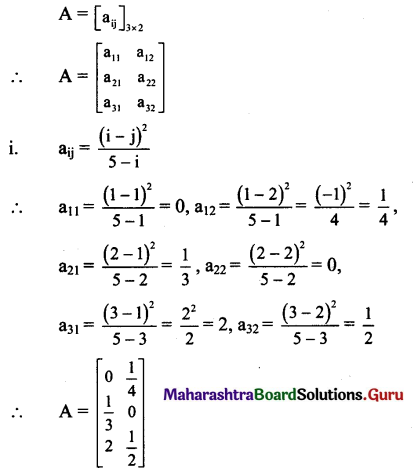
![]()
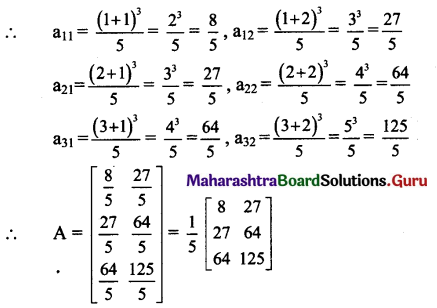
![]()
![]()
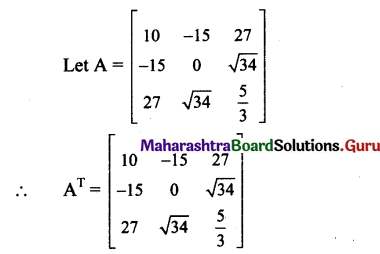
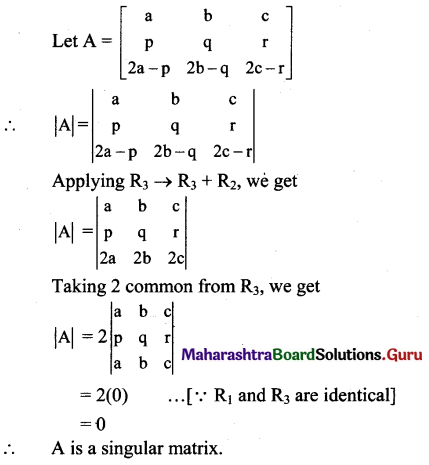
![]()
![]()

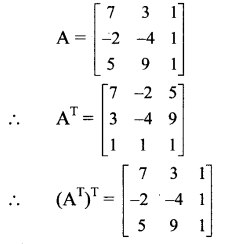
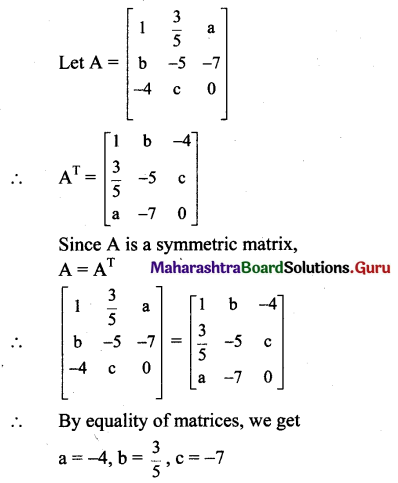
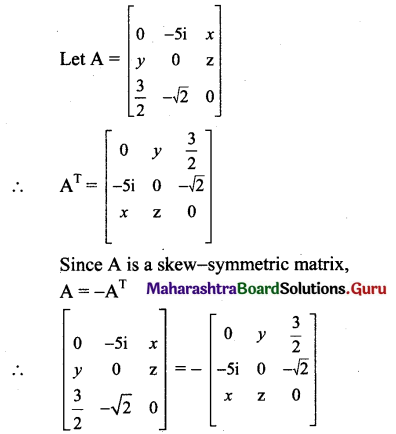
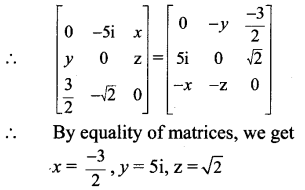

![]()
